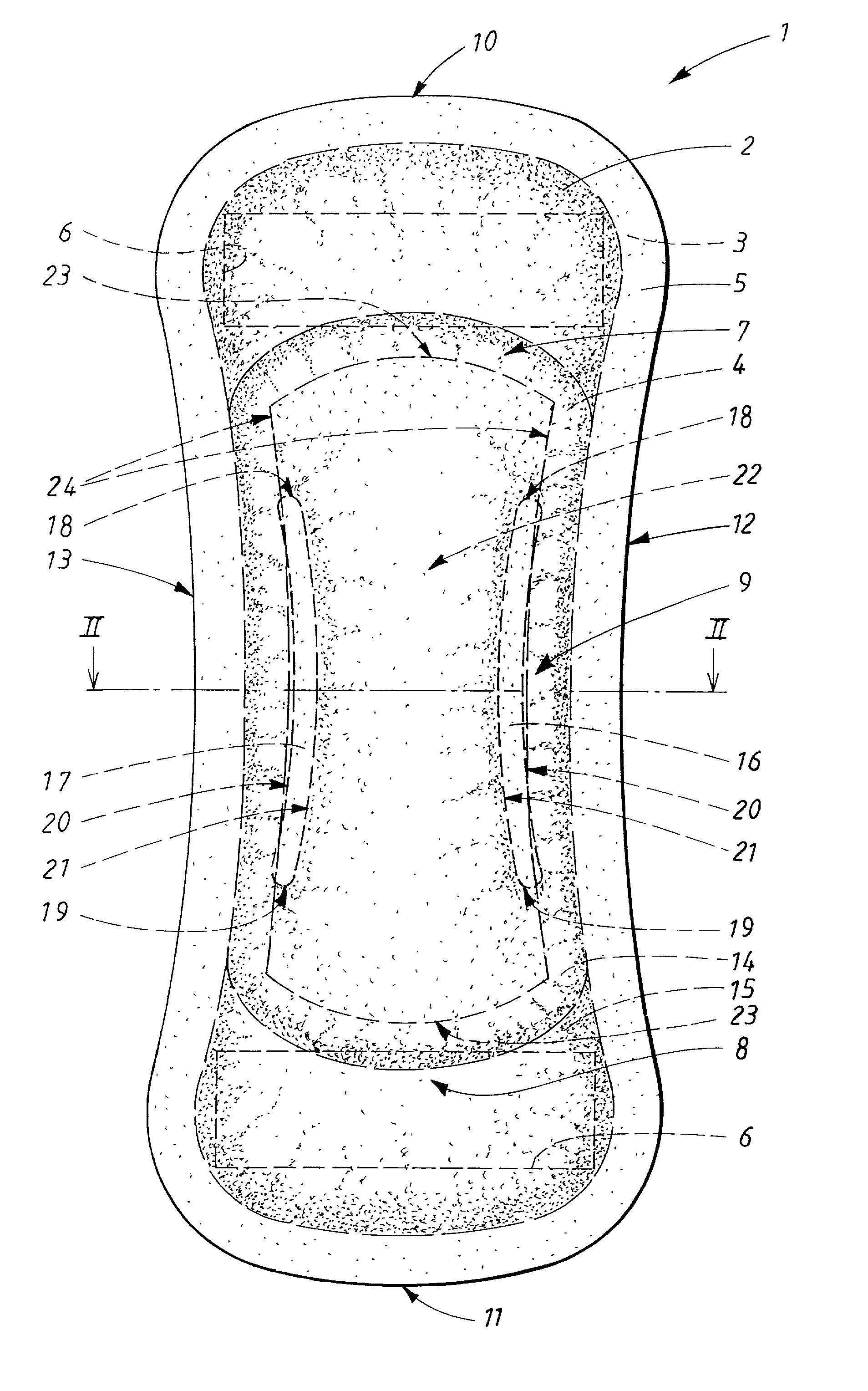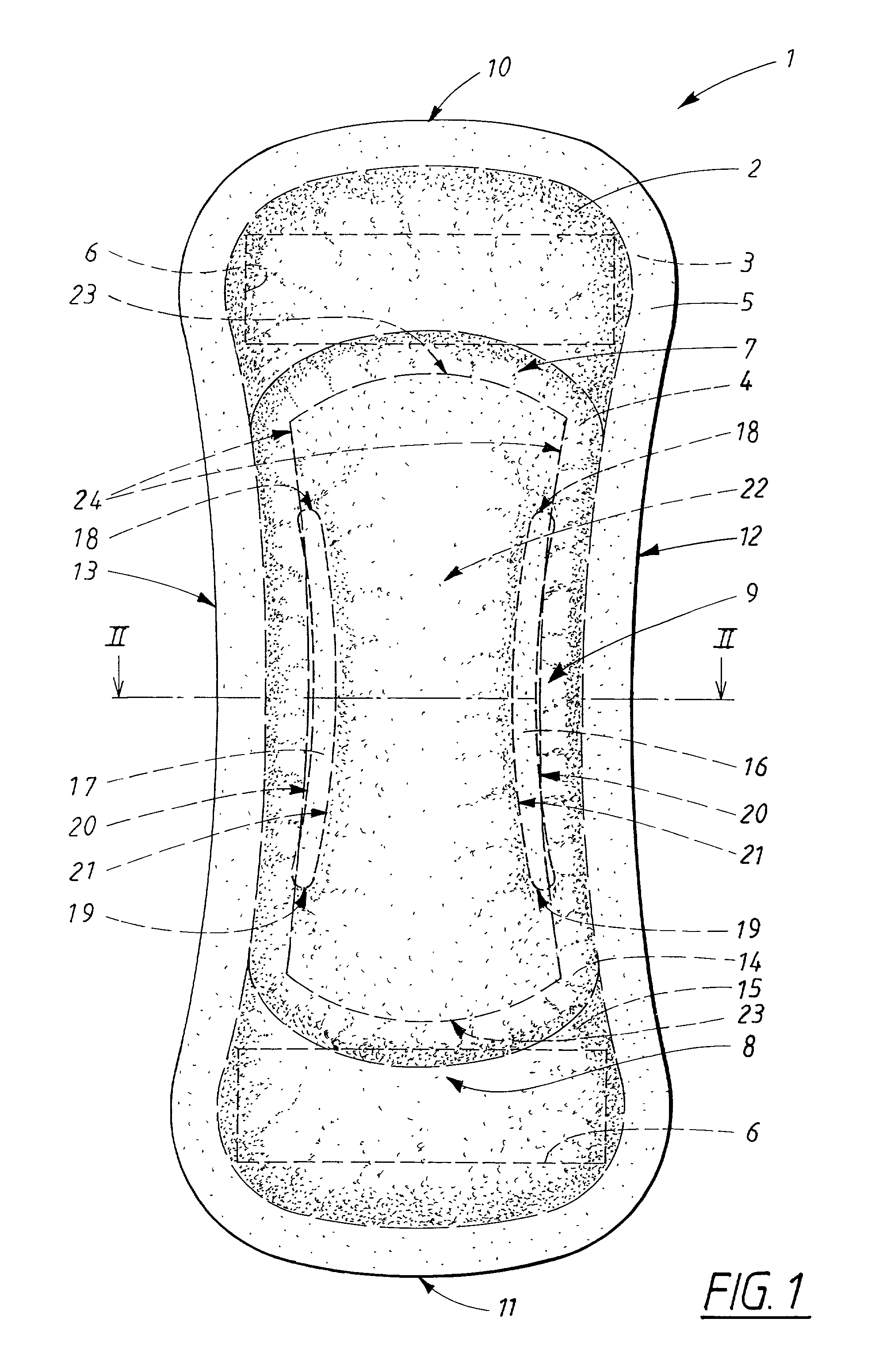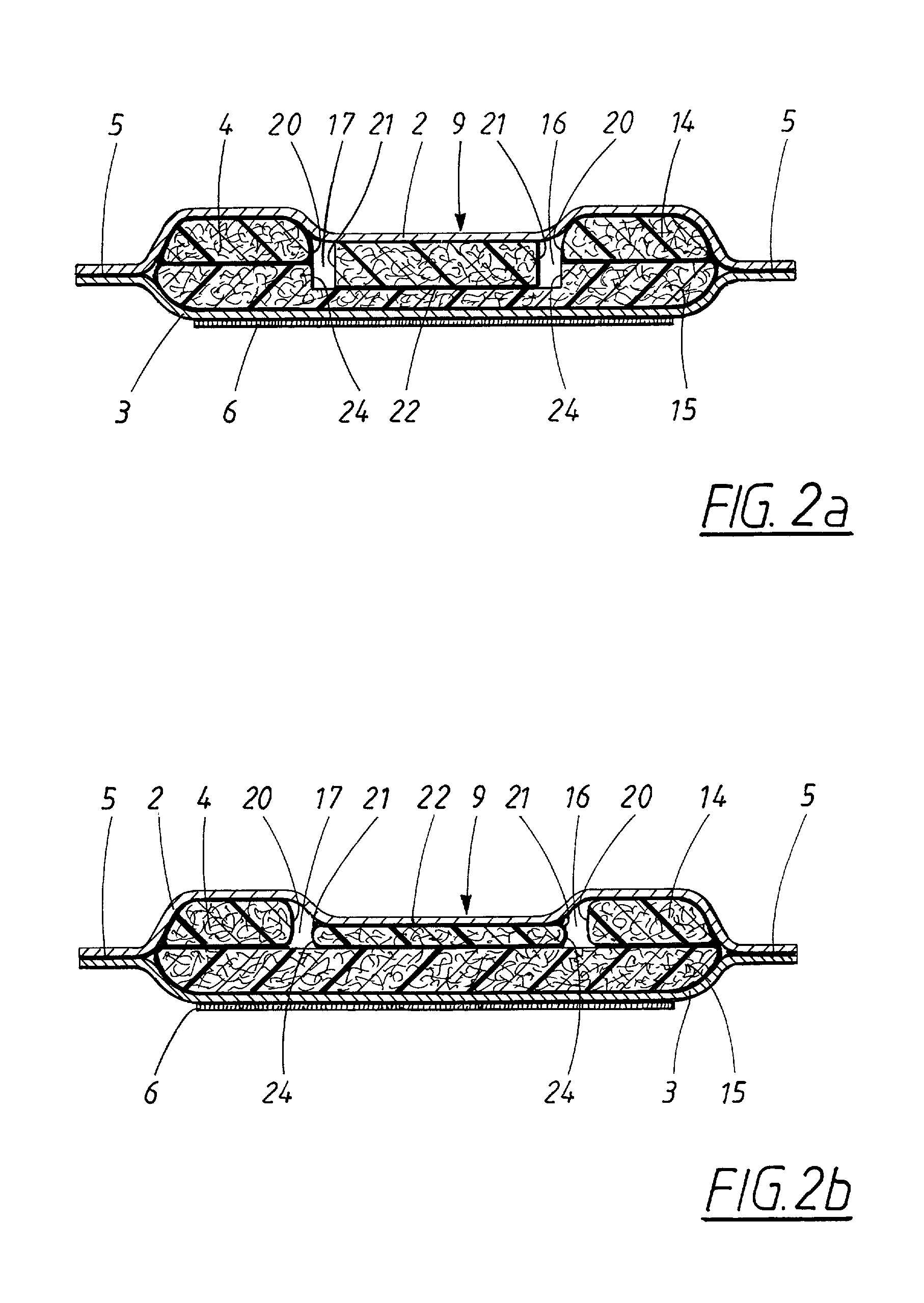[0009] The combination of the longitudinal channels and the compressed area between the channels results in high instantaneous liquid absorption, with a good fit at the same time being retained during the dry state. The liquid which the product receives can penetrate rapidly and readily down through the channels to the underlying core, resulting in more rapid admission. The channels also shape the product in conformance with the inside of the user's thighs, resulting in a good U-like fit being achieved. A good fit minimizes leakage which can occur due to occasional gaps which are formed between the absorbent product and the user's body. The compressed area contributes to ensuring a good fit and increases the stability and deformation resistance of the product, thereby helping the absorbent product to remain in place during use. In addition, the second absorptive layer serves to hide the channels so that the latter cannot be seen through the liquid-impermeable backing layer, something which might otherwise be regarded by users as being disturbing and disquieting. A particularly good masking effect is obtained if the compressed area is arranged in the second absorptive layer. A further
advantage of the invention is also the fact that substantial economies in material can be obtained due to it being possible to recirculate all the material which has been removed from the channels back to earlier production stages.
[0010] The compressed area preferably extends transversely the whole way between the outer edges of the two channels. In addition, the longitudinal extent of the compressed area preferably corresponds essentially to the length of the channels. Alternatively, the length of the compressed area can be greater or less than the length of the channels; for example, the compressed area can extend the whole length of the absorptive body. It is also possible to design the compressed area with straight side edges even if the channels have a curved shape, or vice versa. Moreover, if the compressed area extends past the ends of the channels, the portion or portions of the compressed area being located beyond the channels may have a greater width than the distance between the outer edges of the channels. This situation can occur, for instance, when the channels are curved and the compressed area has curved longitudinal edges which follows the contour of the channels and extend in a curved fashion beyond the ends of the channels. However, preference is given to designing the side edges of the compressed area such that they the have the same general shape as the channels.
[0011] According to an alternative embodiment, it is possible to arrange a further two longitudinal arcuate channels in the second absorption layer, with the channels extending through the whole of the thickness of the second absorption layer. The masking effect of the second absorption layer is naturally lost in such an embodiment.
[0012] According to one embodiment, the first absorption layer consists of chemical thermomechanical pulp and the second absorption layer consists
chemical pulp. Chemical thermomechanical pulp will henceforth be termed CTMP and
chemical pulp will henceforth be termed CP. A CTMP layer has a relatively
open structure with relatively large capillaries since CTMP fibres are rigid and moderately coarse. To a large extent, the
open structure remains even after
wetting since the fibres retain much of their rigidity. Consequently, an absorption layer composed of CTMP has a comparatively great ability to take up liquid instantaneously and good ability to retain liquid but a comparatively poor ability to spread liquid.
[0013] CP fibres are thin and flexible and form a fibre structure having relatively small capillaries when they are laid in a layer. An absorption layer composed of CP fibres has a great ability to spread liquid; however, because th capillaries are small, absorption into the layer only takes place slowly. It is obviously possible, within the scope of the invention, to conceive of the first absorption layer consisting of CP and the second absorption layer consisting of CTMP.
[0014] Different types of absorbent foam, and absorbent bound or unbound fibre structures, consisting entirely or partly of absorbent fibres such as cotton, rayon,
peat, flax or the like, are other absorptive materials which can be used when constructing an absorbent product according to the invention. It is furthermore possible for the absorbent product to comprise so-called super absorbents, which are absorbent polymeric materials which are able to absorb many times their own weight of body liquid, thereby forming an aqueous gel. Superabsorbents exist in the form of particles, fibres, flakes, granules or films and can be mixed with other materials in the absorption body or be arranged in separate
layers.
 Login to View More
Login to View More  Login to View More
Login to View More 


